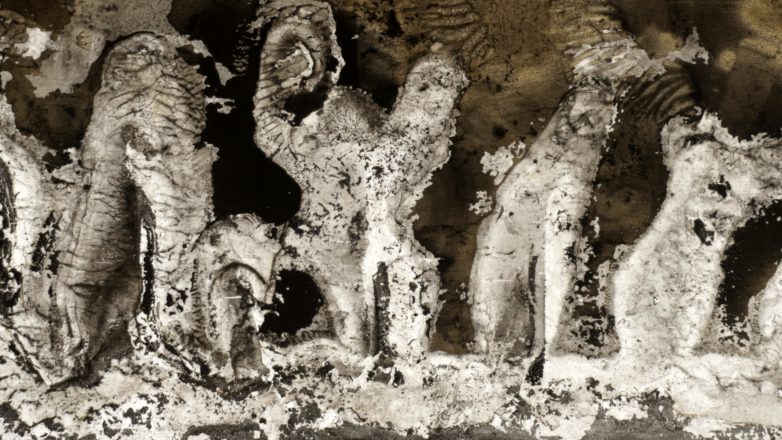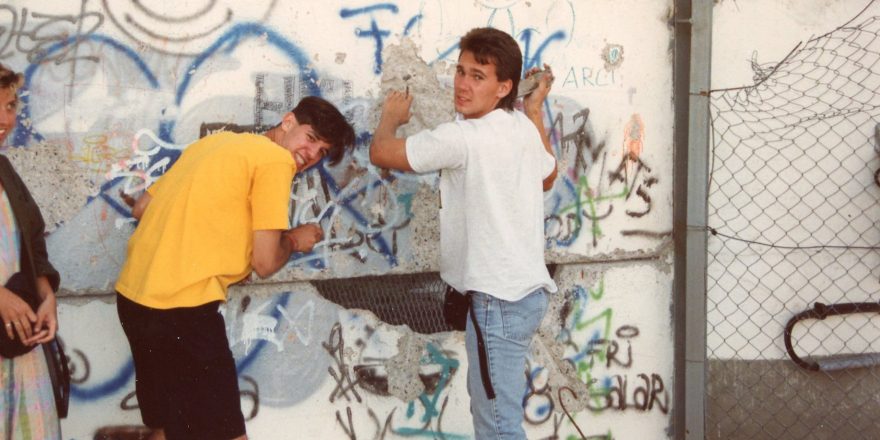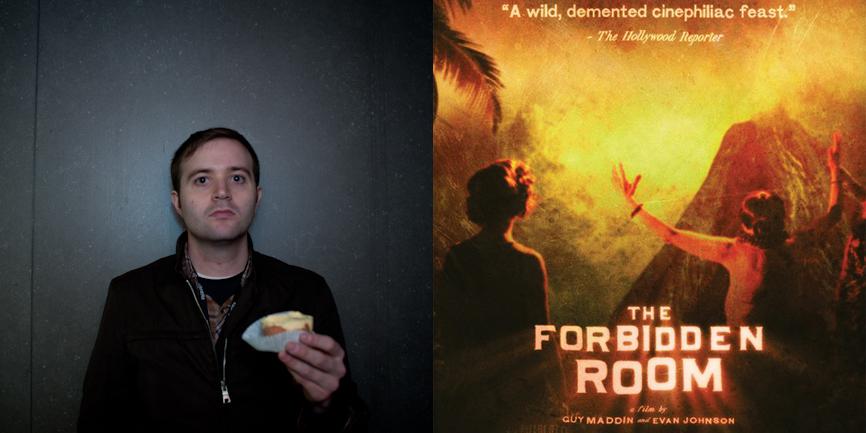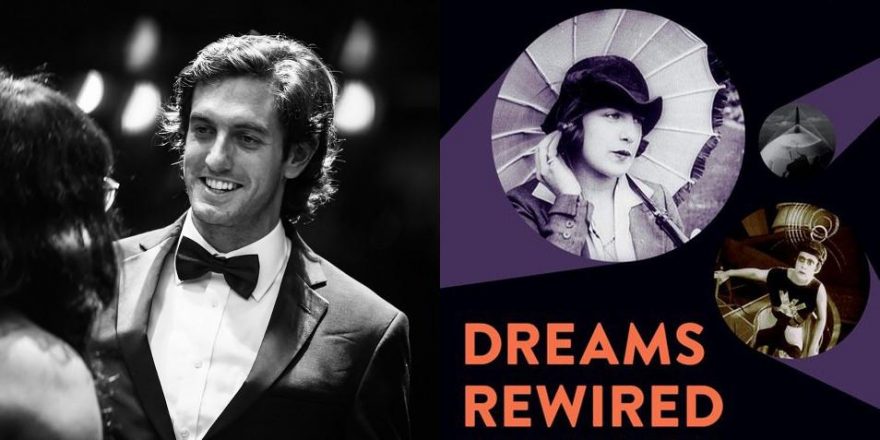On July 24, 2016, I was furiously trying to finish my edit of Dawson City: Frozen Time when I first learned of the four submerged reels of film that had been recently recovered by an Icelandic fisherman. My friend and collaborator the composer Jóhann Jóhannsson was visiting his homeland of Iceland when he heard of the find, and wrote to tell me about it. The discovery was three weeks old at that point. It had already ignited a storm of conjecture about what the films might be, who had dumped them and why. Initially, different theories had placed their location within the general neighborhood of various sunken warships and submarines, both German and American, on which it was supposed that the reels had once been onboard entertainment or cargo.
But almost as quickly as these theories were floated, they were shot down. Erlendur Sveinsson, then the director of the Icelandic Film Archives, posted a still frame from one of the reels on Facebook, and within hours a Russian expat living in Iceland identified the reels as a copy of Derevensky Detektiv (Village Detective), a 1969 Soviet crime comedy. As it was neither a rare nor lost film, interest in the discovery quickly dissolved. Whether the reels were flotsam or jetsam hardly mattered now. They were identified as the unwanted copy of an otherwise unremarkable film which had been preserved elsewhere.
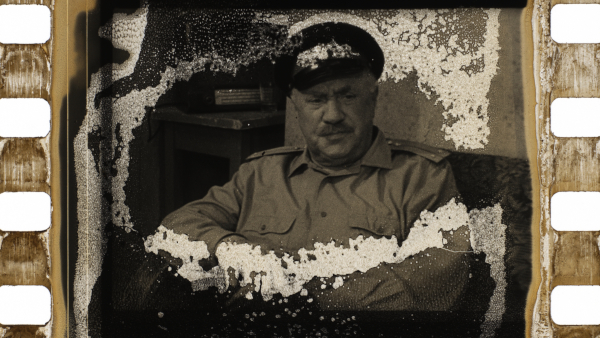
When I looked up Derevensky Detektiv, I noticed that its star, Mikhail Zharov, had appeared in an impressive number of films (70), in almost as many years. Yet he remained virtually unknown to Westerners. His career had begun in 1915 in Tsarist Russia, playing a young guard in Ivan the Terrible’s army. His last film was a sequel to the one that had been discovered in the ocean – a made-for-television movie from 1978 in which he played the same village detective. Along the way, he had worked under the great Russian directors of the 20th century – with Vsevolod Meyerhold in the theater, with the silent film director Yakov Protazanov in the 1920s, and then with Sergei Eisenstein in the 1940s, again playing a guard under Ivan the Terrible.
His career seemed to mirror the arc of Communist Russia, beginning clear-eyed, idealistic and impassioned, before gaining some weight – and with it, some baggage. With a face too sardonic to be cast as a true believer, Zharov was instead cast as a doubter. His roles as a young man were often throwbacks to an overstuffed bourgeoisie, a character who mocked the ideals of the new socialist society, or only used them to advance his own personal agenda. He was often cast as the comic foil – the thief, the gambler, the bureaucrat, or the poseur revolutionary on the make.
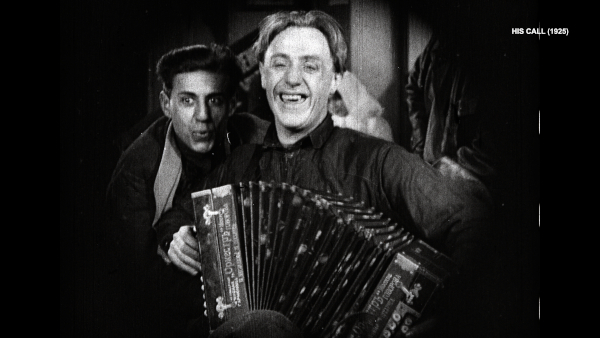
As he aged, the characters he played remained anachronistic. And in this way, he always had work. By winking at the audience, and playing roles within roles with comic brilliance, he never seemed to represent any one single era except, perhaps, the one that had just passed.
In Derevensky Detektiv, he plays an old district police chief in a rural Soviet village where, in 1968, the younger population is beginning to look to the West for their values and rules of conduct. Aniskin, the self-appointed village detective, uses the search for a missing accordion as an excuse to try to restore the traditional social order to a Soviet farm collective. The theft of the accordion itself is a rare, and rather modest, crime. That it is taken so seriously is meant to indicate not only how little crime exists in this community, but also the general irrelevance of its aging district police chief. However, Aniskin’s code of justice, anachronistic as it may be, is meant to be seen as more nuanced and in tune with the actual needs of the community, as it navigates the decades after Stalin.

If the missing accordion itself was in some ways a MacGuffin, the search for it at least provided the opportunity to explore the circumstances around its loss. I saw this as my role here, as well, with this recovered print. The reels of Derevensky Detektiv that were pulled up from the Atlantic Ocean did not represent the discovery of a rare film. On the contrary, these were only four of the nine reels that comprise the complete film, the camera negative of which is safely stored in the vaults of Gosfilmofond, the Russian film archive. The film has been regularly shown on Russian television for the past 50 years, and therefore has been seen by generations of Russians. So it may have been found, but it had never truly been lost to begin with.
Furthermore, the print in question had perhaps been thrown overboard because it had a fatal technical defect. In order to be shown on television, or on a small projector, the film had been reformatted from a 16:9 to a 4:3 format, using an optical printer. On one reel, there was some frame slippage that evidently occurred during the optical printing, and which perhaps had made the entire print expendable. So, this was probably jetsam.
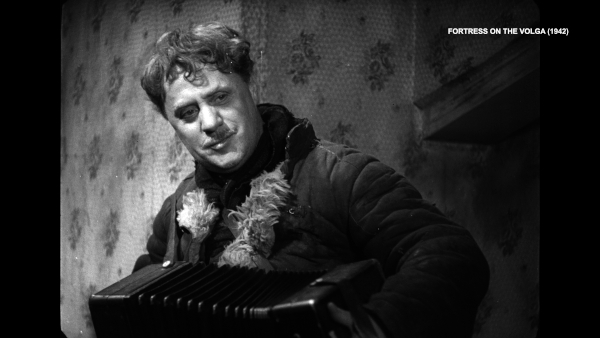
And, of course, the four reels had sat at the bottom – and in the middle of – the Atlantic Ocean for perhaps 50 years. The cans and reels that once housed it had long rusted off, and the plastic film had sat naked on the ocean’s floor, exposed to the cold saltwater of the deep for decades. Until they were scooped up by a fisherman’s net on July 3, 2016.
When Johann wrote me about them three weeks later, I felt like they had washed up on my shore. They didn’t need to be the last remaining images of a lost silent masterpiece. To me, they already were. It’s just that the film that it had morphed into now had a different plot, and a radically different look, than the one that was originally represented on its plastic frames. Derevensky Detektiv may not have been lost, but The Village Detective had just been found. Each line of dialogue was not informed by the fact that it has sat on the bottom of the ocean.
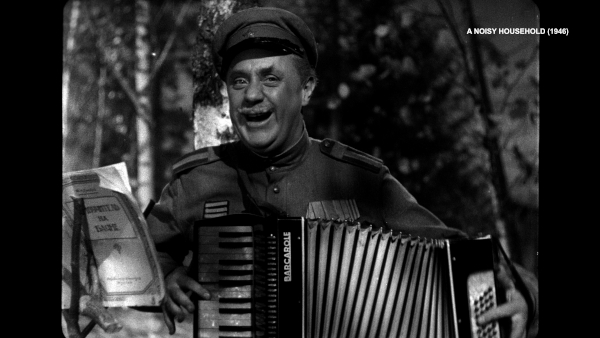
So the actor Mikhail Zharov became my MacGuffin. I would not create a biopic about him, but I would use his career as recorded on film to dive through the Soviet century, as a divining rod that would reflect the years and decades in which he worked.
In archival film practice, something does not truly have a place in an archive unless it exists on film. Film sits atop the pyramid of archivable motion pictures, with 35 mm being the lingua franca, the Rosetta Stone which can jump to any new format known or not yet known to man. Below 35 mm comes the other smaller (and even the larger) gauges, and then a steep drop-off to other physical media – tapes, CDs and DVDs. Hard drives and electronic media have no real place in a library whose purpose is to preserve media for future generations.
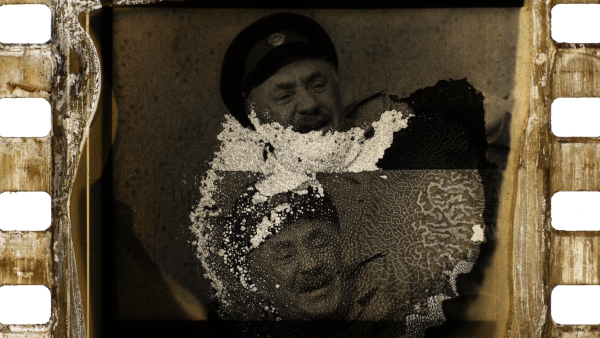
It is widely accepted that only a small percentage of the enormous amount of digital media that we produce each day will survive our lifetimes, if they survive the next decade. There is no mechanism in place to ensure that it will outlive us, or a solar event, or simple, mundane obsolescence. The digital archive exists as an ephemeral action, the calling up or sending of information from one server to another. It does not exist in the cold, dry resting place of a physical object on the shelf in a brick-and-mortar building. Nor will it survive the dark depths of the Atlantic Ocean, from where it may be returned to the surface one day like Rip Van Winkle, to face a new century, in a different hemisphere, where films reels are as antiquated as the 20th century.
What will future generations know of these images when they resurface? Fragile as they may seem to be, it seems what we have printed on plastic film, and wound up to sit on our shelves, is what will survive us. Our history, as perceived by future generations or alien beings, will become more and more associated with the 20th century because that is what was recorded on film. And how it was represented on film will become the way that it’s remembered. A re-enactment of the October Revolution – although staged three years after the event – will become the definitive representation of the October Revolution. Our history will become what we shot and saved on film.

One of the great artifacts of the 20th century is the Soviet Union. It is nestled inside that century with a decade or two buffer on either side, shielding it, in name anyway, from the tsars that both preceded and succeeded it. From a truly enlightened group of intellectuals came a valiant effort to redistribute wealth and eradicate class society and poverty. The changes were as abrupt as they were breathtaking. Yet the gains were modest and ultimately short-lived. And the loss of life, by any standard in history, was staggering. As Peter Bagrov describes Eisenstein’s critique of Stalin in his Ivan the Terrible, Part II: “This is a film about how cruelty, can only give birth to cruelty. And that it’s impossible to stop, even if the purpose is noble. And how the Tsar eventually becomes a maniac.”
We can see Zharov, in the roles he played, navigating this rapidly shifting terrain. By the time he is a recognizable film star, he portrays cynical, sneering, characters, who are contemptuous of anyone foolish enough to be swept up in the political movements of the day. He is disdainful of the bureaucracy and brutality that has encoded socialist order, yet he once may have believed in its underlying ethos. That he remains unknown to Western viewers is yet another form of obsolescence – we can only perceive that which we have access to, whether or not it has been preserved.
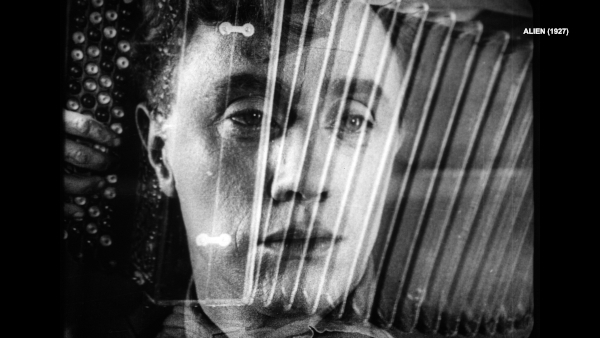
In Derevensky Detektiv, Aniskin’s search for an accordion becomes a search for the soul of his community, for the heart that still pumps breath through its bellows. As he and Gennady, the man whose accordion was stolen, listen for the sound of the missing instrument at night, above the town, Gennady is struck by the great stillness before them. “Every evening passes us by. God knows how. And instead I could have been here. Listening to the quietude of eternity.” To which Aniskin retorts: “It’s not the quietude of the eternity you have to listen for. It’s the accordion! Hush!”
And there they sit, at the end of reel five of the recovered film, their image transformed by the ocean in which they have rested, listening for these past 50 years in the quietude of eternity. As the last tail of the reel coils out into the cold dark salt water, the repeating pattern of dissolving emulsion mimics the waves on the ocean’s surface and floor. And these abstract waves in turn begin to resemble the crests and pitches on the bellows of a submerged accordion. The missing accordion has appeared as a shroud on the film. “My God! That’s it!” Gennady cries out. “That’s my accordion! My accordion! My God …”
All images courtesy Bill Morrison.



